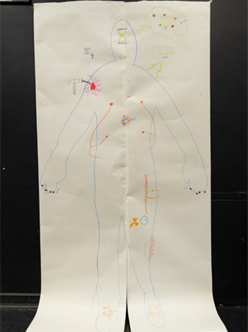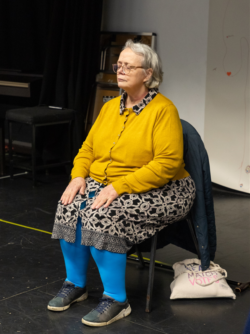Healthy Ageing: ART-thritis
'I found that I am more physically capable than perhaps I thought was. It is as if the music bribes you into doing more than you would normally'.
Project Participant
Click for audio track of video.
ART-thritis was a five-week pilot project (February-March 2022) designed and delivered with sports scientist Dr Antonis Stavropoulos-Kalinoglou and in collaboration with five patient participants living with arthritis. The project explored the use of echome as a form of creative expression for communicating experiences of living with arthritis and chronic pain. As arthritis may cause inflammation, pain and movement restriction, it can limit physical activity as well as participation in the arts (for example through dancing or playing an instrument). The purpose of the project was to explore whether echome could encourage movement as well as deepen the participants’ relationship with their body and condition.
The workshops involved a range of techniques, including biomechanical warm-ups, creative writing exercises, and scores for sound-movement improvisations. It asked the following questions:
- How does the experience of arthritis translate into sound?
- How do different sounds relate to different body parts and the patient’s embodied experience?
- What are the aesthetic qualities of the condition? In what ways may arthritis enable unique modes of expression and sonic registers?
In the evaluation interviews all participants acknowledged that echome encouraged physical activity and -as one of them put it- ‘bribed’ them into moving more, precisely because the movement generated a pleasant aesthetic experience. They also reported that there was an increase in the range and extent of their movement and a shift of focus away from the ailing body parts
and towards the parts of the body that were still functioning. According to the participants, this shift was made possible by the music that was generated out of the movement.
Furthermore, the participants noted that their ability to explore the full musical scale of the natural instruments was determined by and mirrored in the range of movement that was possible in the body part that was wearing the sensor. One of them explained that ‘the smooth scales are symptomatic of a disability-free, damage-free, pain-free movement’ and reversely, ‘when you have the disability, when
you have the pain, the movement is harsh. If the movement is harsh, then the sound is harsh’. This points towards the possibility of using echome as a tool for communicating experiences of pain, discomfort and restriction that cannot be fully captured by existing measuring systems.


